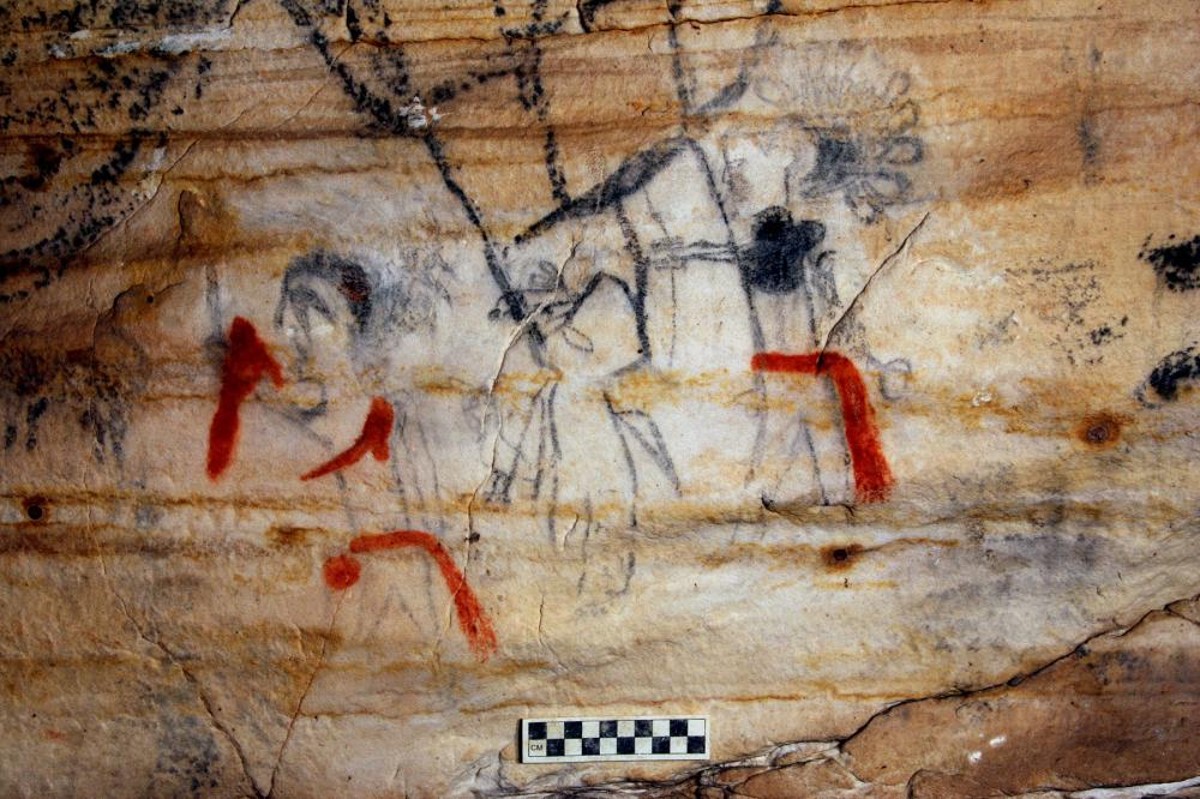Anthropology
Related: About this forum"Truly Heartbreaking": Osage Nation Decries Sale of Cave Containing Indigenous Art
Scholars have called it “the most important rock art site in North America” on account of 290 prehistoric glyphs adorning its walls.
by Hakim Bishara
September 15, 2021

Ancient Native American art inside Missouri's Picture Cave (all photos by Alan Cressler and courtesy of Selkirk Auctioneers & Appraisers)
A historic Missouri cave containing Native American art from over 1,000 years ago was auctioned off yesterday, September 15, for $2.2 million. The Osage Nation, which hoped to buy the sacred site to protect and preserve it, called the sale “truly heartbreaking.”
Known as the Picture Cave, the two-cave system is nestled within a 43-acre stretch of land in Warren County, Missouri, about 60 miles west of St. Louis. Scholars have called it “the most important rock art site in North America” because of a collection of 290 prehistoric glyphs on its walls. It is believed to be the largest concentration of Indigenous American paintings ever discovered in the ancient cultural region once called Meso-America. The cave was a sacred ritual and burial site for Indigenous tribes, primarily the Osage Nation, who controlled the area before their lands were dispossessed. The cave system is also home to one of the largest populations of the endangered Indiana gray bat.
The prehistoric cave, along with the 43 acres of lush pastures surrounding it, was auctioned by the St. Louis-based Selkirk Auctioneers & Appraisers on behalf of a three-generation family whose members originally purchased the property from private ownership in 1953 and used it mainly for hunting.
In an email to Hyperallergic, Selkirk’s director Bryan Laughlin said the previous owners were “the driving force behind [the cave’s] protection, preservation, and understanding.”
More:
https://hyperallergic.com/677162/osage-nation-decries-sale-of-cave-containing-indigenous-art/
SheltieLover
(75,592 posts)captain queeg
(11,780 posts)I worked at a dam in the Snake years ago. While there I stumbled onto some clippings about an old native site that had been inundated when they filled the reservoir. I didn’t get much info but it sounded like a pretty extensive site. The govt at least made some kind of effort to preserve the place but didn’t stop filling the lake. I figured at least the site was protected from grave robbers and such though the water would destroy some aspects of the site. I wonder if some day the waters will be removed and the place would end up providing some new information about the life in that area. I don’t remember how ancient the site was supposed to be. But if it was well preserved it might provide some new insight using modern science that was not available when the site was first discovered once it was uncovered. I think there were some caves involved.